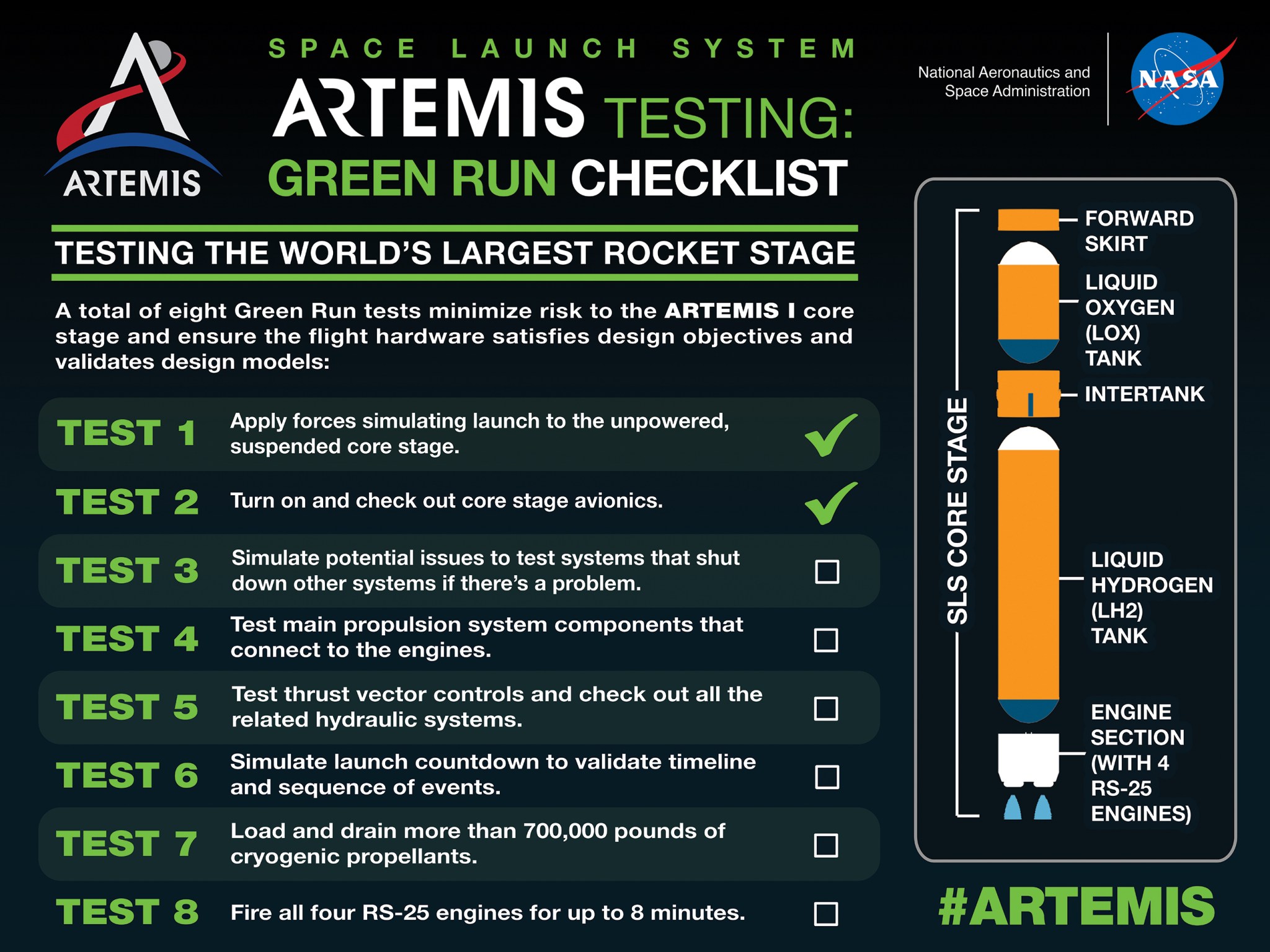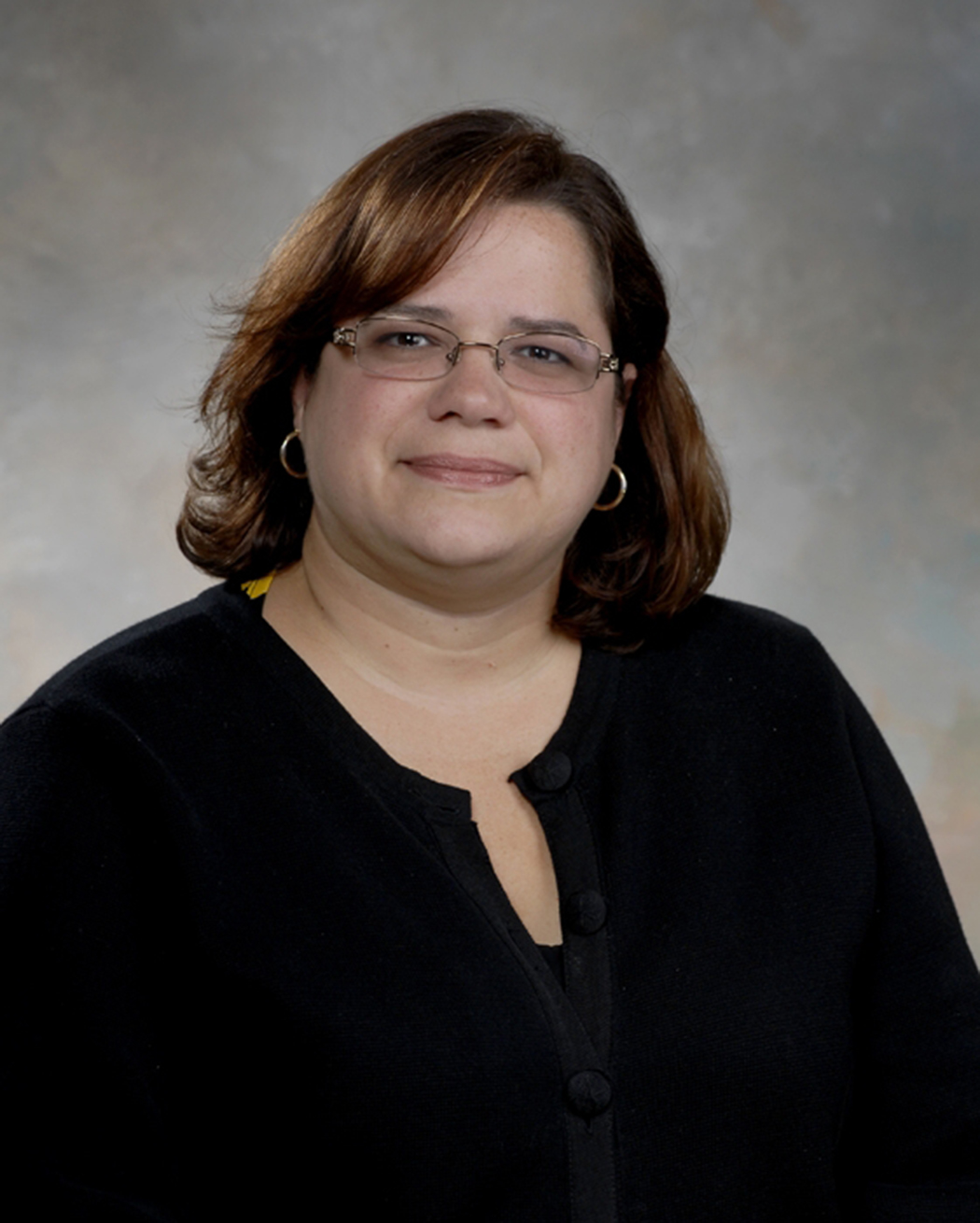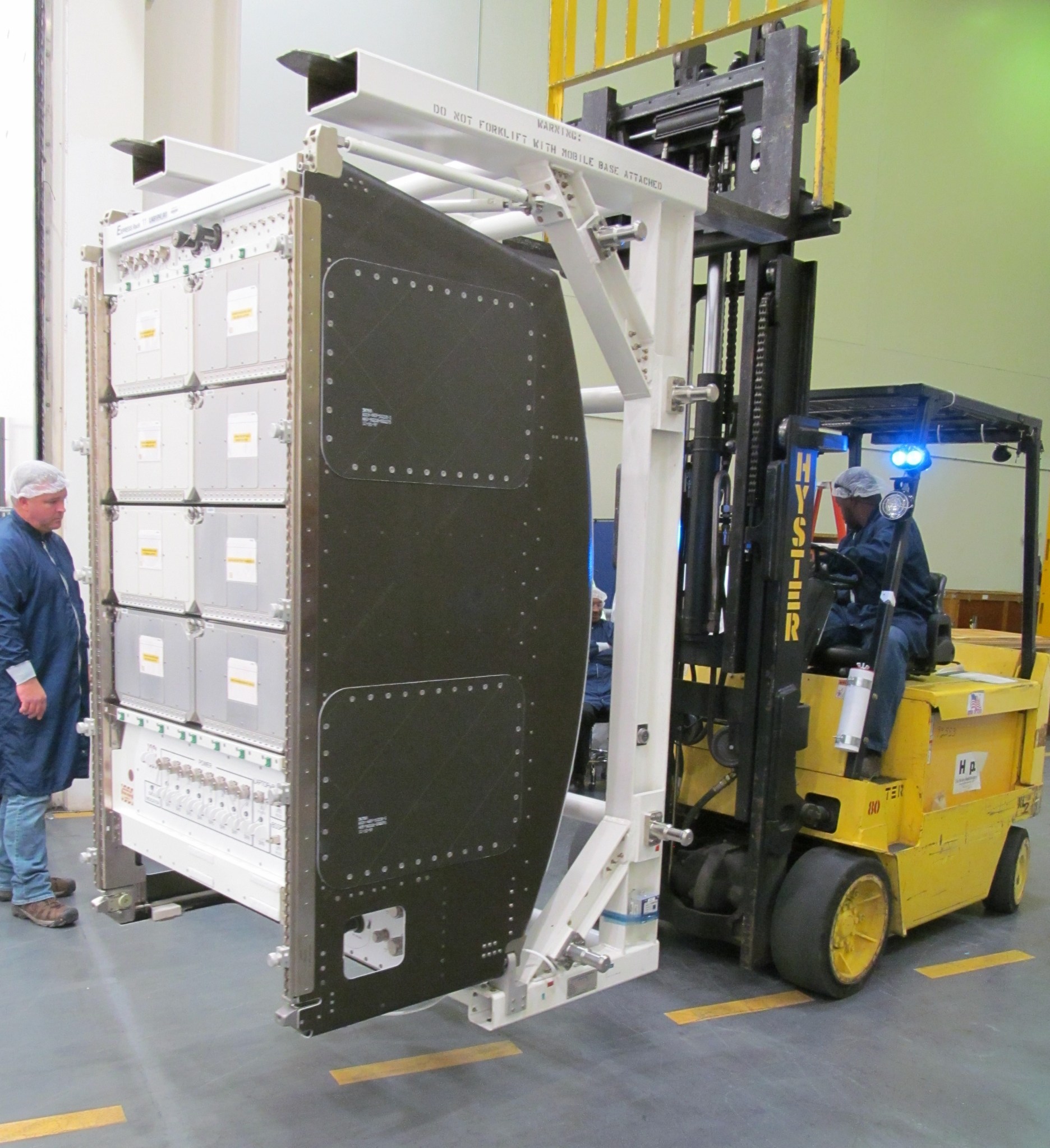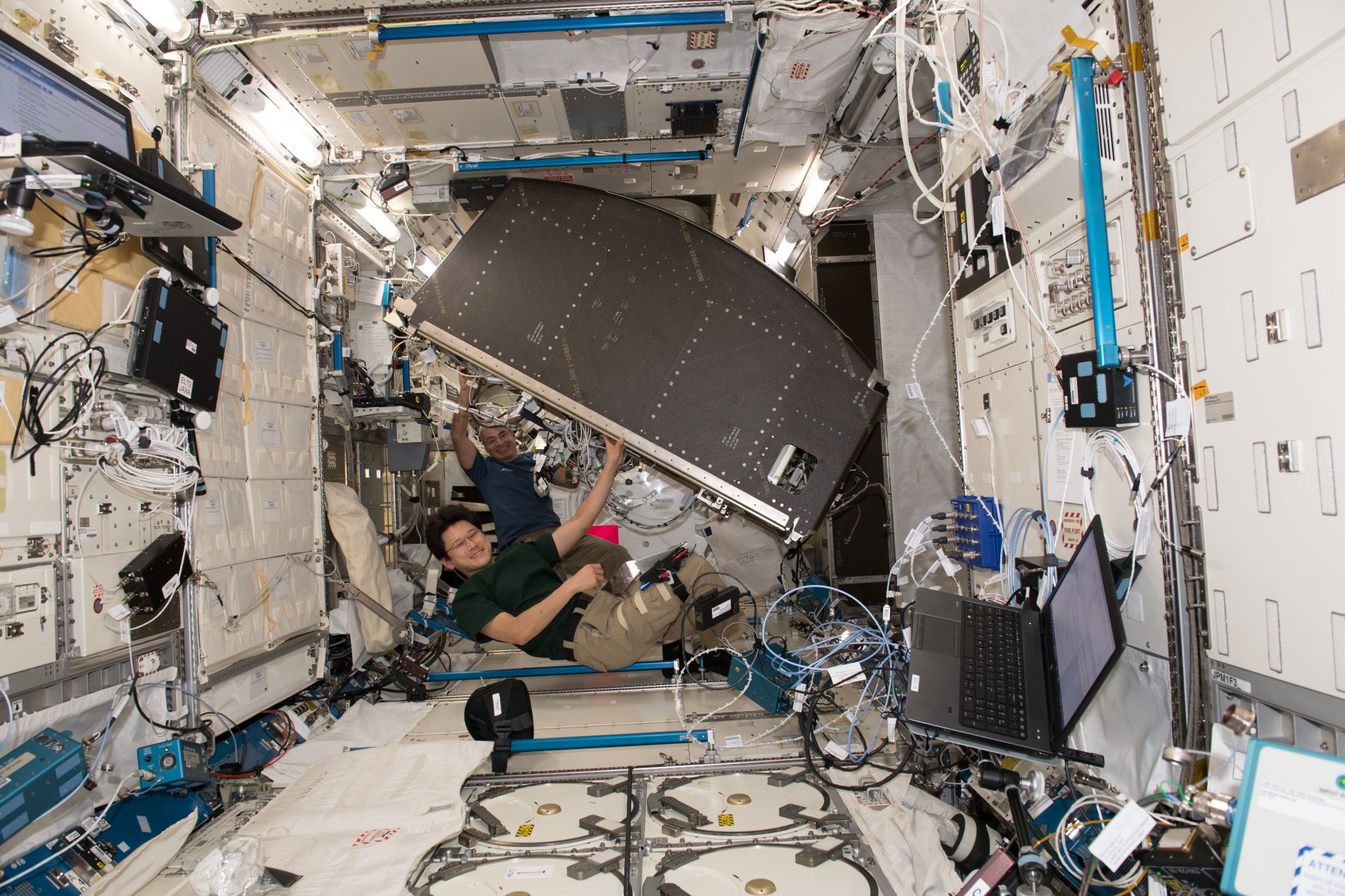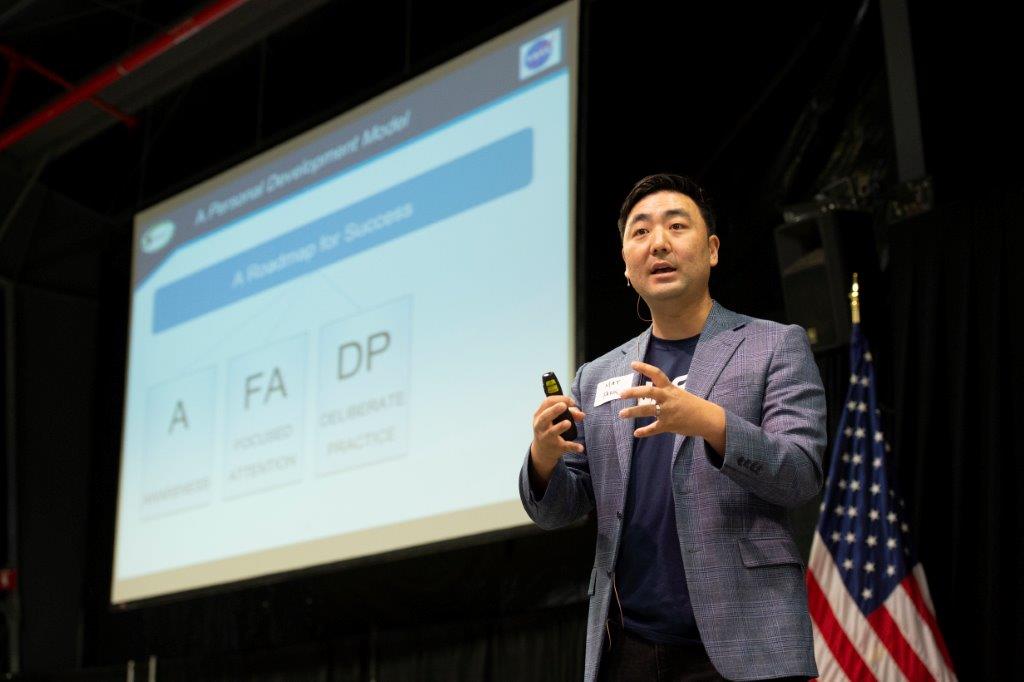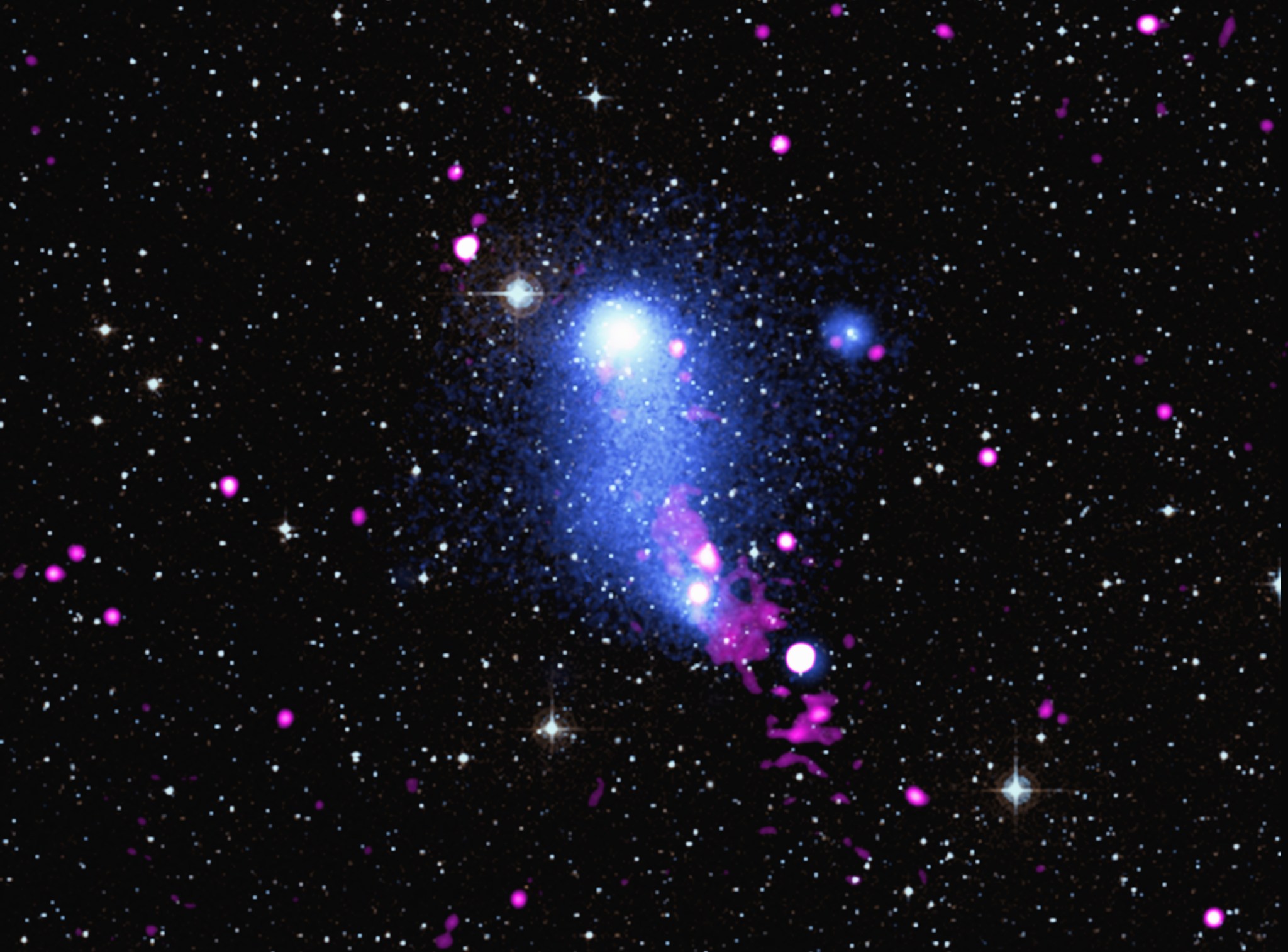In This Week’s Star
- NASA’s SLS Core Stage Green Run Tests Critical Systems for Artemis I
- Digna Carballosa Named Acting Human Resources Director at Marshall
- Last of NASA’s Vital, Versatile Science ‘EXPRESS Racks’ Arrives at Space Station
- Michoud Employees Wear Protective Equipment During Facility’s Transition to Stage 3
- Mat Park Steers NASA Leaders, Managers, Team Members Toward Success
- Jennifer Patton Helps NASA Prepare For Future in Space
- University Team to Test Technology in Space via NASA Competition
- Clash of Titans as Chandra Documents Galaxy Cluster Collision
- NASA at Home: How Does the SLS Rocket Fly?
- This Week in NASA History: First Crewed Skylab Mission – May 25, 1973
NASA’s SLS Core Stage Green Run Tests Critical Systems for Artemis I
NASA is resuming work on a series of tests to bring the Space Launch System rocket core stage to life for the first time, allowing engineers to evaluate the new complex stage that will launch the Artemis I lunar mission.
In January, engineers began activating the stage’s components one by one over several months through a series of initial tests and functional checks designed to identify any issues. Those tests and checks, collectively called Green Run, will culminate in a test fire replicating the stage’s first flight.
“Green Run is the step-by-step testing and analysis of the new SLS rocket core stage that will send astronauts to the Moon,” said Richard Sheppard, SLS stages Green Run test lead at NASA’s Marshall Space Flight Center. “This testing will reduce risks for, not only the first flight, but also for the Artemis mission that will land astronauts on the Moon in 2024.”
The Green Run test series — conducted in the historic B-2 Test Stand at NASA’s Stennis Space Center — is a collaborative effort between the SLS program, the Stennis test team, core stage manufacturer Boeing and engine manufacturer Aerojet Rocketdyne.
On March 18, work was temporarily suspended on Green Run when Stennis went to Stage 4 of NASA’s Response Framework following a rise in COVID-19 cases in the area near Stennis.
Prior to pausing test operations, engineers completed the first of the eight tests in the Green Run series. Now, work is slowly and methodically starting back as workers return to prepare the facility and resume testing.
“The team connected the facility with the rocket earlier this year, both electrically and mechanically,” said Ryan McKibben, Green Run test conductor at Stennis. “We are now preparing for the second test, which will power on the vehicle’s avionics and the three computers that control the rocket’s flight as it soars into space.”
The avionics are distributed throughout the stage. For Green Run, engineers at Marshall designed software similar to the flight software. A special stage controller will be used to simulate the Launch Control Center operations that will control the actual launch at Kennedy Space Center.
“The core stage avionics along with Green Run software have successfully completed tests in our test laboratories at Marshall,” said Lisa Espy, core stage avionics lead at Marshall. “I am excited to see the flight systems come to life that will control the rocket as it sends the first Artemis mission to the Moon.”
The first test in the Green Run series — a modal test — was conducted in January. This test used shakers to impart dynamic forces on the suspended stage to identify primary bending modes of the stage. Information from the modal test will help engineers verify vehicle models needed for the operation of the rocket’s guidance, navigation and control systems.
Next, the rocket’s avionics will be turned on and checked out. This includes not only flight computers and electronics that control the rocket but also those that collect flight data and monitor the overall health of the core stage.
In the third test, engineers will check out all the safety systems that shut down operations during testing. To do this, they will simulate potential issues.
The propulsion test will be the first test of each of the main propulsion system components that connect to the engines. Command and control operations will be verified, and the core stage will be checked for leaks in fluid or gas.
Next, engineers will ensure that the thrust vector control system can move the four engines and check all the related hydraulic systems.
The sixth test simulates the launch countdown, including step-by-step fueling procedures. Core stage avionics are powered on, and propellant loading and pressurization are simulated. The test team will exercise and validate the countdown timeline and sequence of events.
In the “wet” dress rehearsal, engineers will demonstrate loading, controlling and draining more than 700,000 gallons of cryogenic propellants into the two test stand run tanks and then returning the stage to a safe condition.
In the eighth and final test — known as the hot fire test — the core stage’s four RS-25 engines will operate for up to eight minutes, generating 1.6 million pounds of thrust, the amount of thrust the engines produce at sea level on the launch pad at liftoff.
After the hot fire test, engineers will refurbish the core stage and configure it for its journey to Kennedy for launch preparations. The next time the RS-25 engines fire, the SLS will launch in an epic debut of Artemis I — the first in a series of increasingly complex missions that will enable human exploration to the Moon and Mars.
Digna Carballosa Named Acting Human Resources Director at Marshall
Digna Carballosa has been appointed acting director of the Office of Human Resources at NASA’s Marshall Space Flight Center for a 90-day period that began May 18.
Carballosa, who has been director of human resources at NASA’s Kennedy Space Center since 2015, will lead the Marshall office on behalf of current director Marcus Lea, who was selected to aid with NASA human resources transformation efforts at NASA Headquarters.
Carballosa, who was deputy director of human resources at Marshall from 2007-2014, will plan, direct and coordinate all Marshall Office of Human Resources operations and customer relationship management functions during her temporary assignment.
She joined NASA in 2007 to develop and implement new human resources strategies at Marshall, create innovative performance management and reward programs, and devise education programs to engage and employ new generations of team members. She previously worked with the Office of Personnel Management from 1993-2007, supporting human resources initiatives for federal agencies including the Department of Homeland Security, Department of Transportation, Department of the Treasury, Department of Justice and Department of Commerce.
Carballosa, a native of Cuba, has earned numerous awards, including the National Association of Hispanic Federal Executives Excellence in Public Service Award, the Space Flight Awareness Leadership Award and the Office of Personnel Management Director’s Award for Excellence. She earned her bachelor’s degree in international affairs in 1992 from Florida International University in Miami.
Last of NASA’s Vital, Versatile Science ‘EXPRESS Racks’ Arrives at Space Station
By Rick Smith
When the Japanese HTV-9 Kounotori cargo ship lifted off May 20 to deliver supplies and science equipment to the International Space Station, a landmark chapter in the station’s story drew to a close — and a new chapter, helping to chart the course for Artemis-Generation voyages into the solar system, began.
Among the cargo the spacecraft delivered to the space station May 25 is the final NASA “EXpedite the PRocessing of Experiments to the Space Station” multipurpose payload shelving unit. Better known as EXPRESS Racks, these permanent fixtures on the station support a variety of research experiments — providing power, protective storage, cooling and heating, command and data communications and easy transport for up to 10 small payloads each.
“Since our earliest ventures into space, we’ve sought more efficient, longer-term ways to conduct cutting-edge science in low-Earth orbit and beyond,” said Bobby Watkins, manager of the Human Exploration Development & Operations Office at NASA’s Marshall Space Flight Center. “The EXPRESS Racks have been a cornerstone of science on the space station, and a vital part of our mission to make space exploration safer and more comfortable for our crews, and also reap untold scientific benefits back home on Earth.”
Marshall oversees space station hardware development and implementation for NASA, and NASA personnel in Marshall’s Payload Operations Integration Center monitor experiments continuously, every day of the year. At any given time, up to 80 experiments can be in process, controlled by station crew members or from the ground. The racks operate at near capacity around the clock, and data compiled by Shaun Glasgow, project manager for the EXPRESS Racks at Marshall, and his team reveals a staggering fact: Since installation and startup of the first space station rack in 2001, NASA has logged more than 85 total years of combined rack operational hours using these facilities.
“The sheer volume of science that’s been conducted using the racks up until now is just overwhelming,” Glasgow said. “And as we prepare to return human explorers to the Moon and journey on to Mars, it’s even more exciting to consider all the scientific investigations still to come.”
Once the new rack is installed, 11 total racks will be on the station — the eight original EXPRESS Racks and three Basic EXPRESS Racks, more streamlined and versatile modern versions. Each is about the size of a refrigerator and comes equipped with up to eight configurable lockers and two drawers to house payloads. Experiments can be conducted, removed independently and returned to Earth depending on varying time requirements.
The first EXPRESS rack was successfully tested aboard the space shuttle in 1997. The first two completed racks were delivered to the space station on STS-100 in 2001 and have been in continuous operation since — as have all the subsequent added racks.
The new rack is expected to be installed and operational by fall 2020.
The technology is a legacy of the space shuttle program, which conducted a raft of scientific investigations from its versatile “mid-deck lockers” — slotted payload storage racks — during more than 130 flights between 1981 and 2011. “Those compact, standardized units became the model for developing the larger, more efficient racks we employ today,” Glasgow said.
He speculates on how the EXPRESS Racks will carry on that engineering legacy, impacting future hardware development as humanity extends its reach ever farther into the solar system. “Science leads, but engineering innovation is the true hallmark of NASA’s accomplishments for more than a half-century,” he said. “The work we did over those years got us here. Now it’s our turn to chart the future, delivering the equipment to carry science and discovery missions into the next century and beyond.”
A final example of that innovative spirit is ready to get to work.
Funded by NASA’s Johnson Space Center, the EXPRESS Racks were developed by engineers at the Boeing Co. and Marshall, which jointly built and tested the racks at Marshall in the late 1990s. Learn more about space station science and research here.
Michoud Employees Wear Protective Equipment During Facility’s Transition to Stage 3
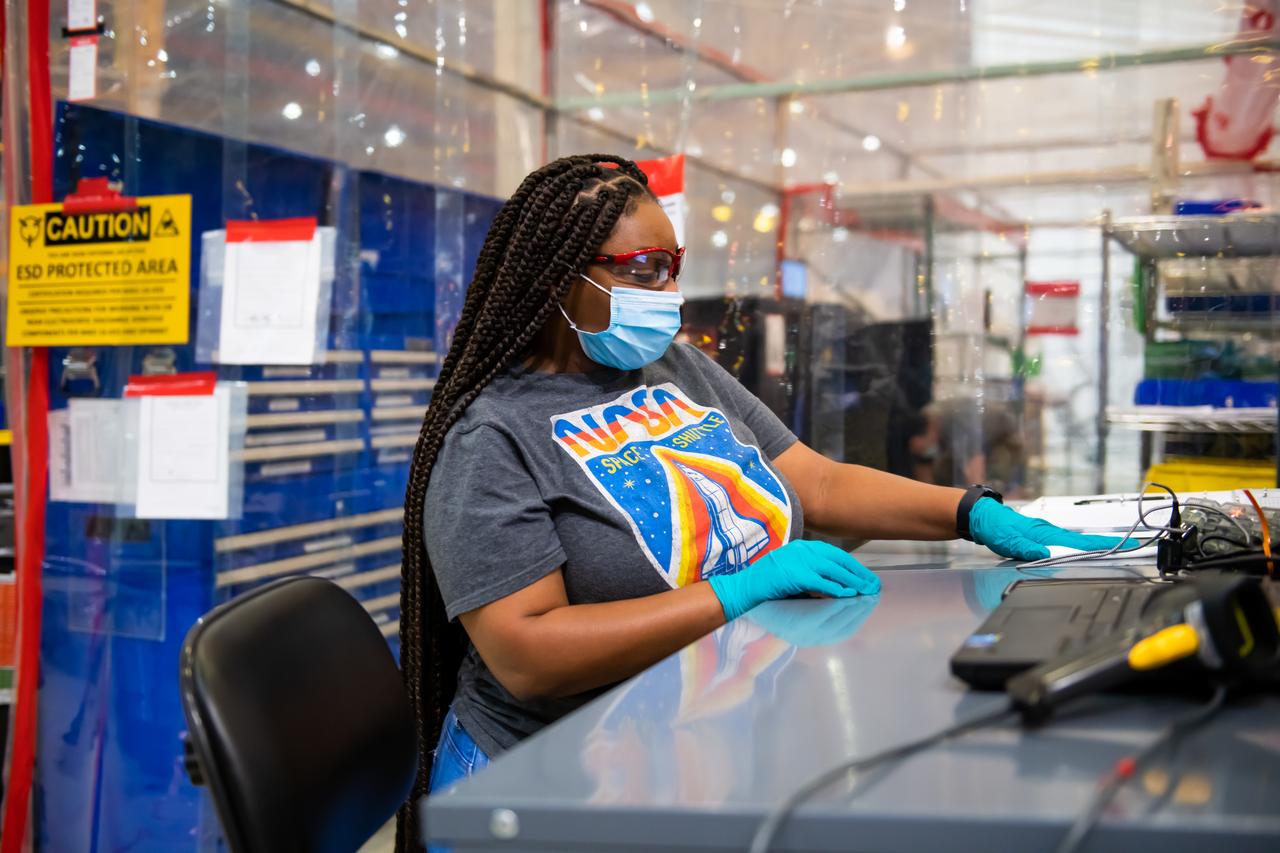
Boeing’s Jade Mitchell cleans a surface as NASA’s Michoud Assembly Facility transitions to Stage 3 of NASA’s Framework for Return to On-Site Work on May 18. Employees wear the appropriate personal protective equipment and/or cloth face coverings as required for assigned tasks, in order to protect themselves and others during the COVID-19 pandemic. Access to the facility is limited to authorized personnel working on mission-critical work that must be conducted on-site. Mission-critical work includes slowly and methodically resuming Space Launch System core stage and Orion spacecraft production activities — particularly critical path deliverables to support the Artemis program — at a pace that limits personnel and follows federal guidelines for social distancing and use of personal protective equipment, such as face masks. For more information about SLS, visit here. (NASA/Steven Seipel)
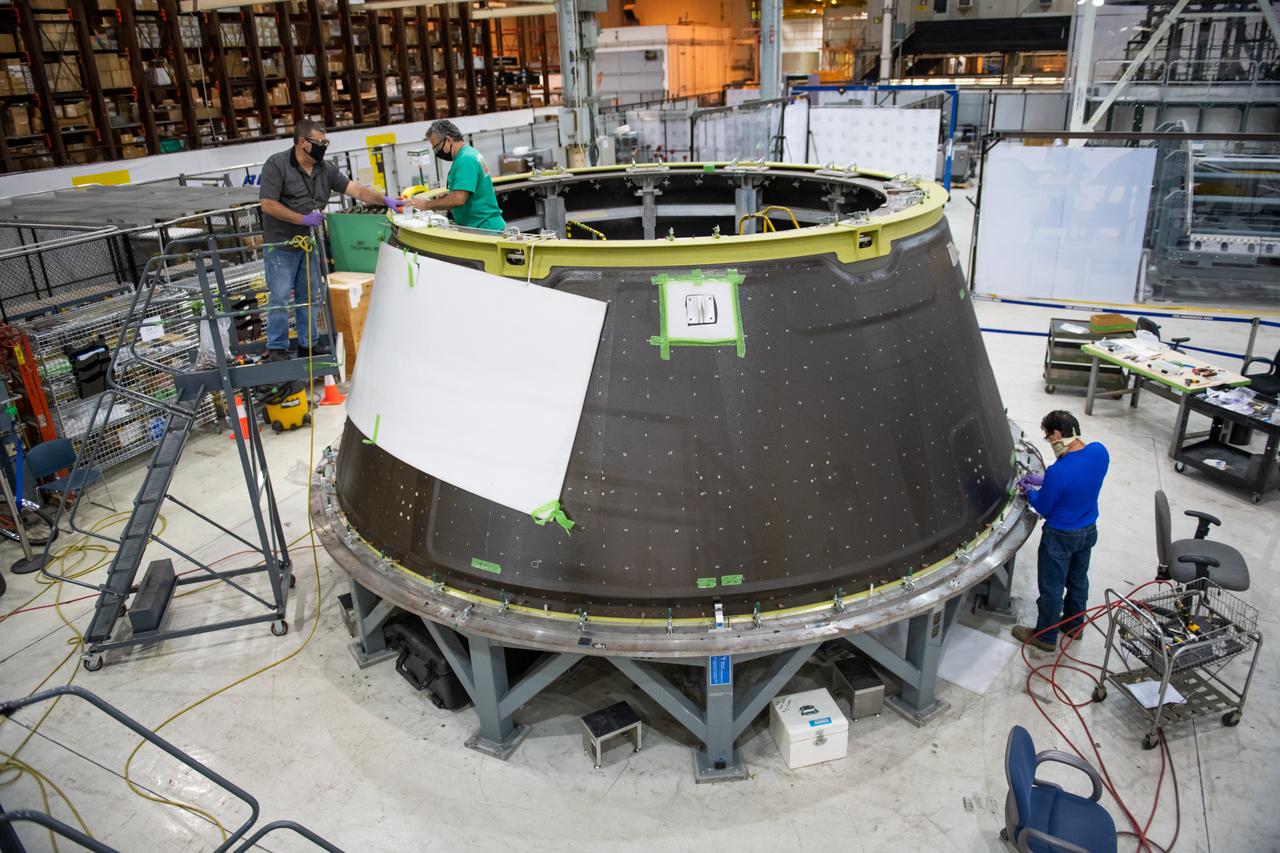
Lockheed Martin technicians perform drilling and assembly operations on the Orion spacecraft adapter cone forward and aft rings. As Michoud transitions into the next stage of returning to on-site work, employees practice social distancing when possible, and are required to wear a facemask when it is not. Adapter testing and additional processing will continue for the next several months and the completed adapter is projected to depart Michoud for NASA’s Kennedy Space Center later this year. (NASA/Steven Seipel)
Mat Park Steers NASA Leaders, Managers, Team Members Toward Success
Editor’s note: Mat Park, a Marshall organizational development specialist, will be the keynote speaker for a May 28 online event commemorating Asian American Pacific Islander Heritage Month. His keynote address, “The Strength of Being You,” will be streamed live for team members at 1 p.m. on Inside Marshall. The program is sponsored by Marshall’s Office of Diversity and Equal Opportunity. All Marshall team members are encouraged to participate.
By Rick Smith
Since 2015, Mat Park has been an organizational development specialist at NASA’s Marshall Space Flight Center, first as a contractor with Aetos Systems of Huntsville, then as a NASA civil service employee supporting the agency nationwide.
Working within Marshall’s Office of Human Resources, he develops surveys, leads workshops and devises tactics to help NASA supervisors, civil service employees and contractors transition to new roles, adapt to changing organizational paradigms and embrace NASA business models to pursue new missions.
Park is a trained psychologist and consultant, a sports psychologist for numerous world-class sports figures and former chief resident in the department of psychiatry at the University of California-San Francisco Children’s Hospital in Oakland, California. He was awarded a master’s degree in sports psychology in 2010 and a doctorate in psychology in 2012, both from John F. Kennedy University in Pleasant Hill, California.
Question: What ignited your passion for space and led you to NASA?
Park: It’s funny. Not in a million years did I ever imagine I would work for NASA. But I’ve always been most passionate about people, about helping them unlock their innermost potential, and that is ultimately what led me here. I was groomed my whole life to play golf on the PGA Tour. I started at age 4 and competed at a very high level from the age of 6. I received a full scholarship to play Division I golf — and then my entire world flipped upside down. I developed performance anxiety. My confidence tanked and I couldn’t hit a ball or sink a putt for the life of me.
That led me to start working with a sport psychologist — and that’s when I found my calling. For the longest time, I viewed my natural tendencies to be empathetic, kind, supportive and patient as negatives barring my way as a competitive golfer. But when I discovered counseling and coaching, those same attributes became my superpower. They opened a door I never would have thought to open, and led me to NASA.
Question: What has been the highlight of your NASA career to date?
Park: There have been many since I joined NASA, but the one that immediately comes to mind was my time working closely with the leadership team in Marshall’s Office of the Chief Financial Officer. They were experiencing some growing pains, so our team devised a long-term strategic plan for the organization, predicting that things might stay challenging for a period as they adapted and evolved. But we knew if the leadership team continued to align, commit and press forward with the plan, positive results would start to show. They trusted us with the endeavor, and the plan worked. The results of the subsequent Federal Employment Viewpoint Survey demonstrated that, and a cultural shift began that has continued to improve ever since.
What excited me most about the project was twofold. First, it is very hard to change culture and ingrained behavior — but when it works, it’s beautiful. Second, leadership trusted us and went all-in. That can be a very difficult thing for any leadership team to do, unless they believe in the process. So it was a very rewarding endeavor. Organizational leadership development is very similar to working with a sports team. It’s my job to help the team work together as cohesively and effectively as possible to fulfill its mission.
Question: What has been the biggest obstacle you’ve overcome to be where you are today?
Park: One of the biggest challenges I struggled with all my life was feeling like I was “not enough.” That may have stemmed from my Korean American upbringing, pursuing an always-do-more work ethic or constantly pursuing a sport that can’t be mastered, golf! That “not enough” syndrome haunted me for the majority of my life, until I realized that happiness isn’t something I could reach out and grab, or work harder to achieve. Happiness was something I needed to find within myself, shifting my perspective to generate more of it in my life. Practicing mindfulness and self-compassion have helped me tremendously to combat that negative mindset.
Question: What advice would you offer to the Artemis Generation?
Park: Be the change. Definitely easier said than done! But I really want the Artemis Generation to grasp the opportunities available to them right now to shape our future in space. Yes, we build on so much history at NASA, working at historic sites, standing on the shoulders of giants, but the future requires vision and self-determination, just as it always has done. Get in the ring. Reach out. Speak out. No one else can tell young people what their generation will be or should be. Make it yourselves. Be proactive, carve yourself a place in history and help today’s leaders craft the future you want to see realized.
Question: What makes you proudest of the Marshall team during the COVID-19 crisis?
Park: This team is incredible. I saw firsthand how Marshall Director Jody Singer and the leadership team rose to the occasion, created contingency plans and went into protect-the-team mode. Her leadership through this crisis — with her colleagues, with the public and with the entire Marshall community — has been nothing short of exemplary. A person’s values and priorities are most evident in times of crisis, and I’m honored to be part of a team with leadership like ours.
I believe we are going to rise up from the changes now taking place across NASA and the nation, as painful as they’ve been for so many of us. The entire COVID-19 experience will reshape the way we think, behave and move forward. How we embrace those changes will determine our future, and help prepare the way for the Artemis Generation. This, ultimately, is my passion — helping to forge that new path for the people in this business we love.
Smith, an ASRC Federal/Analytical Services employee, supports the Office of Strategic Analysis & Communications.
Jennifer Patton Helps NASA Prepare For Future in Space
By Rick Smith
Jennifer Patton is an information technology specialist in the Office of the Chief Information Officer at NASA’s Marshall Space Flight Center. Born in Fairbanks, Alaska, to a first-generation Thai American and an African American officer in the U.S. Air Force, Patton grew up in Huntsville. Today she supports NASA’s Agency Applications Office, helping develop new applications and procedures that will carry NASA into the next great era of exploration.
Question: What sparked your passion for NASA and your career in the space program?
Patton: We moved to Huntsville when I was 6. My dad switched career tracks from the Air Force to the U.S. Army, and we’ve been here ever since. My mother went to work for NASA Protective Services when I was in elementary school, so Redstone Arsenal and NASA were a crucial part of our lives. I started my NASA career at Marshall in 2007 as an administrative assistant. Those early years sparked my interest in all things NASA, and I made it my goal to become a full-time NASA employee. There’s just something about being part of this mission — to return human explorers to the Moon and send them beyond, unlocking the mysteries of the cosmos and improving life here on Earth for all humankind. What could be more exciting than that?
Question: How did you manage to keep school, full-time work and motherhood in balance?
Patton: I went to Calhoun Community College in Huntsville, where I graduated with an associate business degree in 2012, and then Faulkner University in Huntsville, where I earned my bachelor’s degree in business in 2013 — all while juggling parenthood and full-time contract work at Marshall, first as an administrative staffer and then an analyst. It was tough, taking on so much at once, but it taught me a lot. What really made it possible was the support of my husband, Brian, and my primary NASA customer in the Office of Center Operations back then, George Cruz, both of whom encouraged me to go back to school. George saw that I could do more than I was doing at the time, and he really went out of his way to help make it possible for me to pursue my degree. That encouragement and camaraderie are evident everywhere at NASA.
Question: What has been the highlight of your NASA career to date?
Patton: It’s definitely been supporting major program and project management endeavors across all the centers, helping to document and define what we identify as “7120 work,” based on our numbering system for NASA documentation — developing program formulation and management policies that will meticulously record and guide the work of the agency to pursue its most ambitious programs and projects. It’s the creation of a legacy of know-how and experience, demonstrating for future generations how we go from a drawing board and sketch paper to new rockets lifting into the atmosphere, new journeys into space. I love documentation, building that roadmap to how we do the work of the nation.
And it’s more vital now than ever, as we continue to see a big transition in our workforce. A whole generation of engineers and managers is retiring — people with 30 years or more of practical experience and know-how. We need to retain their knowledge! I’ve enjoyed being tapped to rotate across our organization and consult with team members tied into all our business lines, gaining expertise and documenting insight about program and project management from longtime veterans, establishing that continuity for generations of up-and-coming engineers, the project leaders who will forge the next era of human achievement in space. I just love this work. I’m always learning, and to do so from the people of NASA is awe-inspiring and so fulfilling. This team is incredible!
Question: What advice would you offer to the Artemis Generation, particularly young people of color?
Patton: It’s simple: Step outside your comfort zone and never stop learning. I was a lucky child, growing up in a multiracial family in a fairly progressive community. It was like growing up in a bubble; you find yourself thinking it’s the norm. Obviously, for a lot of kids, it’s not like that, and everyone faces roadblocks and tough experiences. But I was lucky to have parents who taught us to be loving while also teaching us to be aware. To be compassionate and vigilant. I’m grateful to be able to pass on these things to my own kids. To encourage them to treat everyone as equals. Now is a crucial time to teach them that, to remind them to be kind and helpful to one another. We are all in this together and kindness can go a long way.
Question: How do you incorporate your multiracial heritage into your working life?
Patton: It started early in my Marshall career. A friend of mine invited me to a diversity event sponsored by Marshall’s Office of Diversity and Equal Opportunity. I just fell in love with the community, with the whole gamut of diversity initiatives honoring people of color and all those seeking stronger representation in the community and across Marshall. Any time I could contribute, I’d do it. Then the Federal Asian Pacific American Council brought its annual conference to Huntsville in 2019. That was huge for us, a great way of uniting people and making NASA part of that vital cultural conversation.
Question: Speaking of uniting the team, what makes you proudest of the Marshall team during the ongoing COVID-19 crisis?
Patton: I’ve been most impressed with how smoothly we’ve transitioned to telework and remote operations during the crisis. We do our best to keep up one another’s morale, sharing personal moments and laughing together during video conferences. And the work we do sustains us. We’re a strong team, no matter how long we’re separated.
But we work in the space program. Wherever we send our explorers, for however long they’re up there, our hearts go with them. And with one another, until we’re all together again.
Smith, an ASRC Federal/Analytical Services employee, supports the Office of Strategic Analysis & Communications.
University Team to Test Technology in Space via NASA Competition
Explore more about this NASA competition: https://www.nasa.gov/cubequest Credits: NASA
After winning NASA’s Cube Quest Centennial Challenge ground competition in 2017, team Cislunar Explorers from Cornell University in Ithaca, New York, was one of three teams awarded the opportunity to launch its CubeSat on Artemis I, NASA’s first test flight of the Space Launch System rocket and Orion spacecraft. Once deployed, the team will test its water electrolysis propulsion technology in space — something that could revolutionize exploration of the solar system. Marshall manages the Centennial Challenges program. (NASA)
Clash of Titans as Chandra Documents Galaxy Cluster Collision
A superheated gas bridge — or flood of hot gases expelled from two colliding galaxy clusters — is on view in the system known as Abell 2384, courtesy of composite X-rays from NASA’s Chandra X-ray Observatory, the European Space Agency’s XMM-Newton and India’s Giant Metrewave Radio Telescope. The galaxy clusters collided several hundred million years ago. Now its gas bridge is being pummeled by particles driven away from a supermassive black hole at the heart of one of the two clusters. The new composite image shows one such burst — a gout of superheated gas so powerful it is bending the bridge itself, which extends more than 3 million light-years and has the mass of about 6 trillion Suns. Read the complete story here. NASA’s Marshall Space Flight Center manages the Chandra program. The Smithsonian Astrophysical Observatory’s Chandra X-ray Center controls science and flight operations from Cambridge and Burlington, Massachusetts. (Image: X-ray: NASA/CXC/SAO/V.Parekh, et al. & ESA/XMM; Radio: NCRA/GMRT)
NASA at Home: How Does the SLS Rocket Fly?
In this #NASAatHome video, Tracie Prater, an aerospace engineer at NASA’s Marshall Space Flight Center in Huntsville, Alabama, explains the basic components that help a rocket launch and fly beyond Earth’s orbit to deep space destinations like the Moon and Mars.
Students can follow along and make their own SLS rocket with these SLS-themed NASA at Home activities, here:https://www.nasa.gov/exploration/systems/sls/outreach/activities.html Credits: NASA
NASA’s Space Launch System rocket will launch NASA’s Artemis missions and its astronauts to the Moon. But how does a rocket fly? In this NASA at Home video, Tracie Prater, an aerospace engineer at NASA’s Marshall Space Flight Center, explains the basic components that help a rocket launch and fly beyond Earth’s orbit to deep space destinations like the Moon and Mars. Students can follow along and make their own SLS rocket with these SLS-themed NASA at Home activities, here. (NASA)
This Week in NASA History: First Crewed Skylab Mission – May 25, 1973
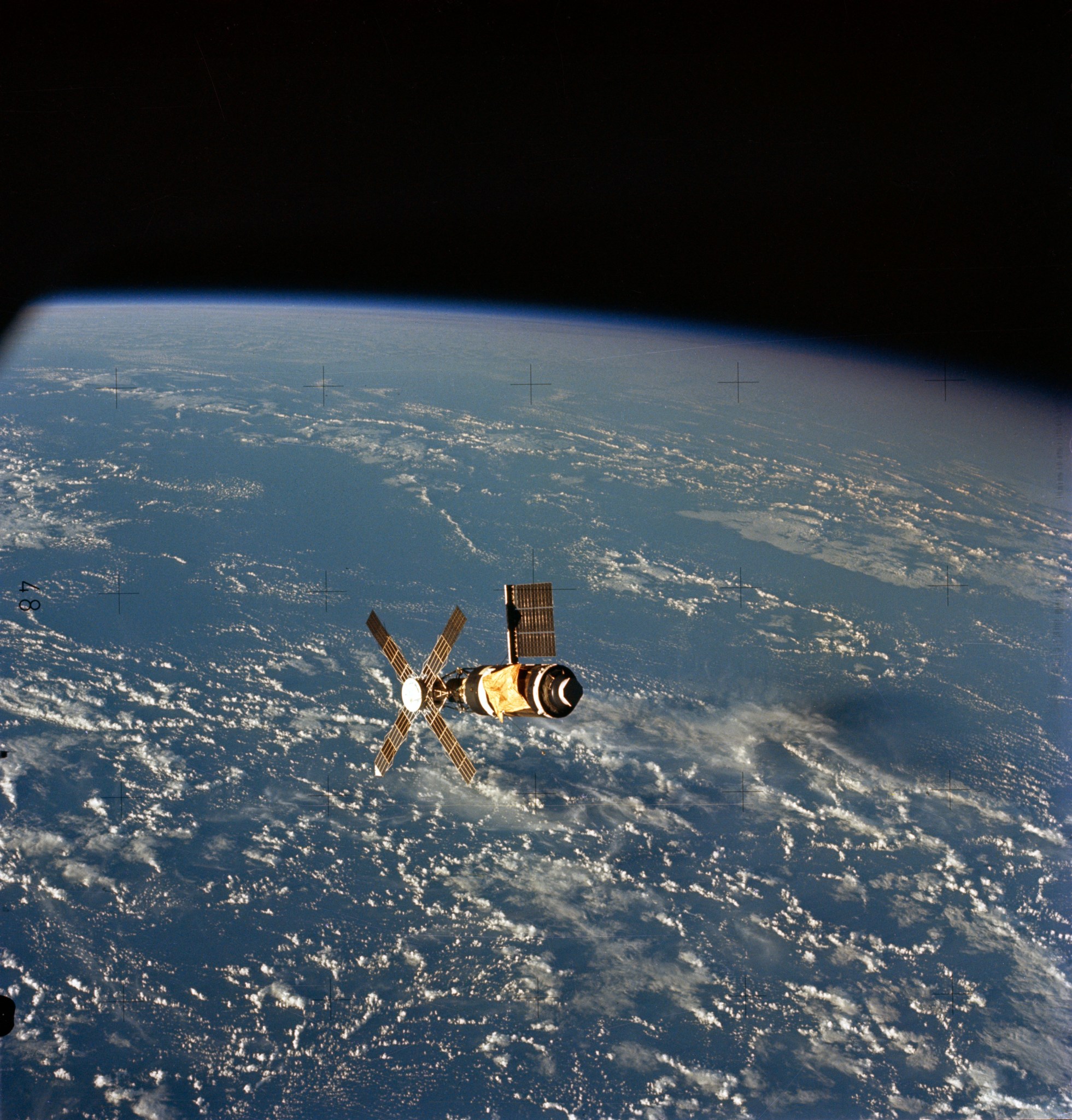
This week in 1973, the first crewed Skylab mission launched aboard a Saturn IB from NASA’s Kennedy Space Center. Astronauts Charles Conrad, Paul Weitz and Joseph Kerwin docked with Skylab on the fifth orbit. The crew conducted solar astronomy, Earth resources experiments, medical studies and five experiments, and performed three spacewalks. They doubled the previous length of time in space over the course of their 28-day mission. Here, the Skylab Orbital Workshop is seen as the crew departs and performs the final fly-around inspection. Today, the Payload Operations Integration Center at NASA’s Marshall Space Flight Center serves as “science central” for the International Space Station, working 24/7, 365 days a year in support of the orbiting laboratory’s science experiments. After 20 years of continuous human presence, the space station remains the sole space-based proving ground and stepping stone toward achieving the goals of the Artemis program. The NASA History Program is responsible for generating, disseminating and preserving NASA’s remarkable history and providing a comprehensive understanding of the institutional, cultural, social, political, economic, technological and scientific aspects of NASA’s activities in aeronautics and space. For more pictures like this one and to connect to NASA’s history, visit the Marshall History Program’s webpage. (NASA)


























